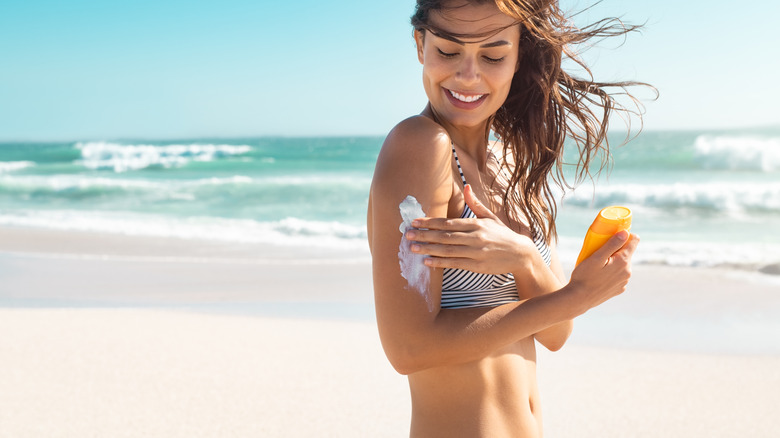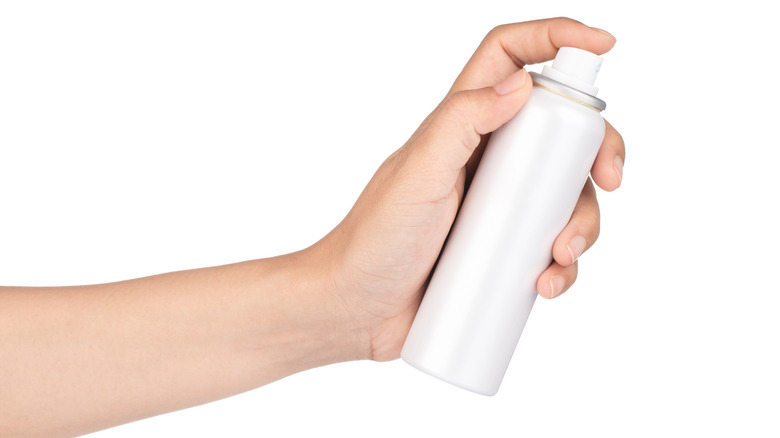The Real Difference Between Spray Sunscreen And Lotion
Are you planning on going to the beach or relaxing by the pool? What about just sitting outside in the sun for a few hours? If so, don't forget your sunscreen. Although spending time outdoors does wonders for your health, going out into the sun without sunscreen puts you at a much higher risk of skin cancer, a condition that affects 20% of Americans at some point in their life. You are also at a higher risk of cosmetic issues including age spots, premature wrinkles, and sagging (per United States Environmental Protection Agency).
The Skin Cancer Foundation advises getting a water-resistant and broad spectrum sunscreen with SPF of 30 or higher if you are planning on spending the day outside. You should apply it over any exposed skin about half an hour before you go outside, and reapply it every couple hours.
In your quest to find the perfect sunscreen, you may have discovered that sunscreen can come in the form of lotion and sprays. Which should you get?
Here's what to know about spray sunscreen
Spray sunscreen is exactly what it sounds like; you are able to spray the sunscreen on your body. Spray sunscreen is easier to apply than lotion, particularly when it comes to areas that are difficult to reach using your hands. Fortunately, the Food and Drug Administration deems spray sunscreen to be safe and effective.
According to the American Academy of Dermatology Association (AAD), the main problem with using spray sunscreen is that it can be tricky to figure out whether you have used enough of it. In fact, research suggests that when using spray sunscreen, many people use less than half of the necessary amount. You should generally spray each area of your body for six seconds (per Harvard Health Publishing). The AAD advises spraying until your skin glistens, and then rubbing it in.
The AAD warns against spraying sunscreen while you're smoking or near an open flame. Inhalation is another potential risk of spray sunscreen, so it should not be applied directly on or around the face or mouth. Instead, the AAD suggests spraying the sunscreen into your hands and then rubbing it onto your face.
With that in mind, experts say that the best sunscreen is the one that you will actually use, so if you find lotion to be too much work to apply, then spray is a great alternative when used properly (per Houston Methodist).


